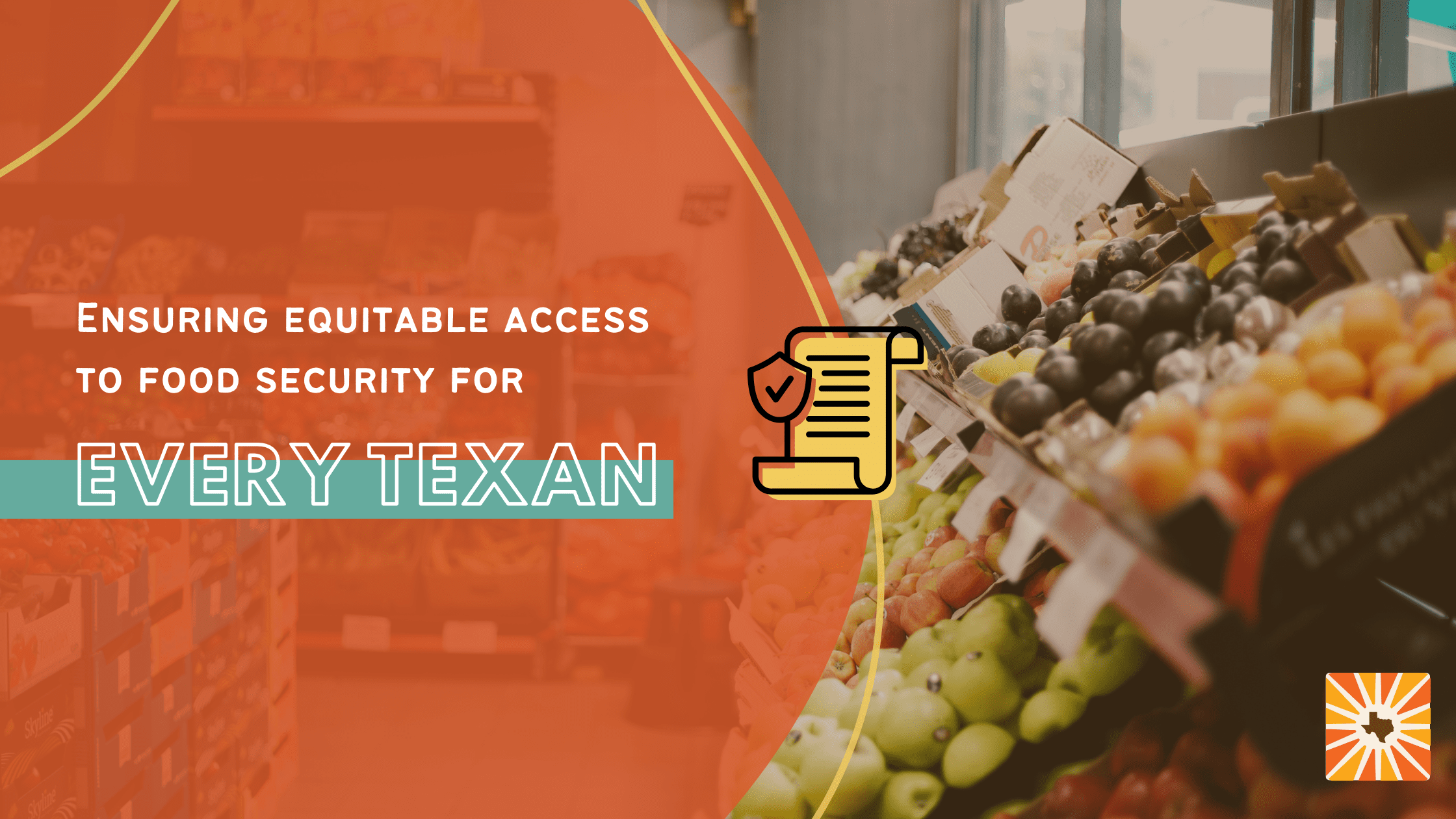Where you live shouldn’t determine whether you can feed your family. Geographical justice in food security means ensuring everyone, no matter their race, income, zip code, or any other factor, has access to nutritious food. Areas designated as Low-Income (LI), Low-Access (LA), or both (LI/LA) are often called food deserts — a term that highlights systemic barriers preventing communities from accessing affordable, healthy food.
LI = below 185% of the poverty line, at least 20% of the tract is LI, and average family income is at or below 80% of the state/metro area median income.
LA = at least 33% of the population live more than 1 mile from a grocery in urban areas and 10 miles from a grocery in rural areas.
Food insecurity is a Texas crisis.
- Texas is #2 in the nation for the highest rate of hunger.
- Texas is sprawling with poor public transit options.
- Texas ranks #1 in USDA low-income, low-access food deserts.
- Texas DSHS reports that in 2023, 7 in 10 adults in Texas are at risk diet-related health conditions.
These LI and LA tracts exist in both rural and city environments. It’s clear that low incomes occur regardless of urban or rural settings and that has root causes in Texas’ low wages compared to cost of living and systemic issues with race, class, and education that also need to be addressed. Texas has its vibrant sprawling cities, and it has massive tracts of rural land where people are working, playing, and providing food to those of us in the cities.
If you can’t imagine low access to food in a city, consider:
- You live in a historically impoverished neighborhood due to old policies such as redlining, or ongoing gentrification that has pushed low-income families out of thriving communities and further from the center of town where they could access public transit and convenient food stores.
- You live in a city with poor public transportation and your transit doesn’t go past stores with fresh food.
Studies have shown that as neighborhood poverty increases, grocery stores become sparser, forcing low-income families to navigate limited food access on top of financial hardship.
Rural hunger is easier to picture in Texas. We know the long stretches from Caddo to El Paso and Lubbock to Padre. We’ve seen towns with little more than a gas station and a Waffle House. Now imagine living there — maybe you have a car, but the nearest grocery store that accepts SNAP is miles away. Delivery services? Either too expensive or nonexistent.
These challenges and more exist across our vast, diverse, and growing state. Texans take pride in our booming cities, but we also value our rural communities and the resources they provide. This legislative session, we have key opportunities to support both.
Take action
This session, you can support bills that address rural and redlined hunger and advocate for equitable food access across Texas.
- HB 231 (Morales): Calls for research on USDA-designated low-income, low-access (LI/LA) areas to identify root causes and impacts on Texans.
- HB 821 (Bernal): Expands access to nutritious food by funding the creation, maintenance, and expansion of grocery stores that accept EBT in LI/LA areas.
- HB 434 (Lopez): Helps SNAP recipients over 65 and those with ADA-designated disabilities recover costs for grocery delivery.
- Other bills: Stay engaged and support additional legislation that improves food access in Texas!
